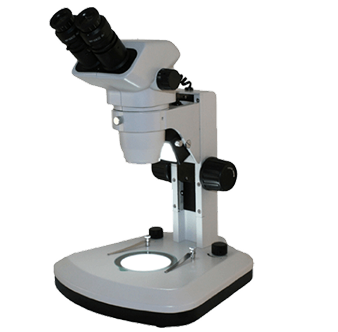Digital Stereo Zoom Microscopes
Digital stereo zoom microscopes provide low power zoom magnification and allow viewing of a live image on the computer screen. The included microscope software allows for capture of images and making measurements. Save microscope images, email them to customers or edit the images using the microscope software. See our stereo microscope buying guide.
What is a Digital Stereo Zoom Microscope?
A Digital Stereo Zoom Microscope is a type of microscope that combines the capabilities of a stereo microscope with digital imaging technology. These microscopes typically have a zoom feature that allows the user to adjust the magnification level and a built-in digital camera that captures high-resolution images and videos of the specimens being viewed.
The digital imaging technology allows for the images and videos to be viewed in real-time on a computer screen, making it easier to share observations and collaborate with others. Some digital stereo zoom microscopes also come with software that allows for image processing and measurement.
Overall, digital stereo zoom microscopes are useful tools for a wide range of applications, such as biological research, industrial inspection, and educational purposes. They offer the benefits of traditional stereo microscopes, such as 3D viewing and low magnification, with the added convenience and versatility of digital imaging technology.
5 Facts About Stereo Microscopes
Stereo Microscopes, also known as Low Power or Dissecting Microscopes, allow for 3D viewing of specimens visible to the naked eye. They are commonly used for viewing insects, crystals, plant life, circuit boards, and more. Additionally, 99% of stereo applications use less than 50x magnification.
Dual Power stereo microscopes provide two or more fixed magnification levels at a cost-effective price without compromising the quality of the optics. The most common types are 10x/30x and 20x/40x. By rotating the objective housing, you can easily switch between magnification levels.
Zoom Magnification enables users to zoom through a range of magnification levels, like binoculars or an SLR camera. Some microscope models have detents or click stops at intervals to make it easy to return to a precise level of magnification.
Focusing is important when using a stereo microscope. If viewing a solid or opaque object, use the incident (top) light. For transparent specimens, use the bottom (transmitted) light. Most stereo microscope applications only require the top light.
A Barlow or Accessory Lens can be used to alter the focal length of the microscope, thereby changing the magnification power, field of view, and working distance. For example, a 0.5x Barlow lens will halve the given level of magnification while doubling the working distance.
What Is A Stereo Microscope Used For?
A stereo microscope, also known as a dissecting microscope, is a type of microscope that is designed to view objects in three dimensions. It is commonly used for observing and manipulating larger objects that are too big or opaque to be viewed with a compound microscope.
Some of the typical applications of a stereo microscope include:
Dissection and Microsurgery: Stereo microscopes are often used in biology and medical research for dissection and microsurgery. The 3D image produced by a stereo microscope allows for accurate and precise work on small, delicate structures.
Industrial Inspection: Stereo microscopes are used in industrial inspection and quality control to inspect the surfaces and features of small parts and components. This is particularly useful in industries such as electronics, precision engineering, and plastics manufacturing.
Forensic Investigation: Stereo microscopes are used in forensic investigations to examine evidence such as hairs, fibers, and other small items that might be missed with the naked eye.
Entomology and Botany: Stereo microscopes are used in the study of insects, plants, and other specimens in biology and botany. The 3D image produced by the microscope allows for detailed observation and analysis of the specimen.

No eyepieces required
Visual Inspection Systems
These systems are perfect for quality control areas where a number of parts need examination throughout the day.
Shop Now
Same day response
Request a Quote
We build custom solutions tailored to fit your microscope needs. We respond to quote requests the same business day.
Submit Request



